Types of dog leashes
Find out what type of lead your pet needs
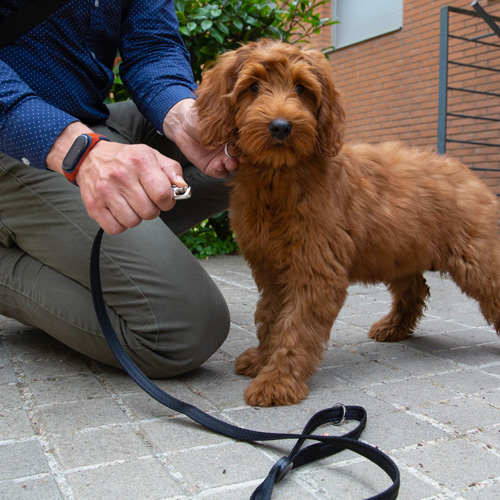
THE IMPORTANCE OF CHOOSING YOUR DOG'S LEAD CORRECTLY
Approximate reading time: 9 minutes
Among the accessories your dog needs, the leash is one of the most important. Its main function is to keep your pet close to you during walks in order to protect them and lead them back if a risky situation arises. However, the lead can also be useful at other times when you need to have some control over your dog, such as a visit to the vet, if you want to introduce them to another dog or cat, or if you are working on training them. Also, it is important to remember that leashes are mandatory in most public places.
This accessory is so important that every puppy should learn to tolerate it from puppyhood, to get used to walking properly on a lead attached to their collar. There is a huge variety of leashes on the market with different designs and features, which can make you feel a little lost, especially if this is the first time you share your life with a furry companion. Don't worry, we are going to analyse the most common types of leashes and assess their advantages and disadvantages, as it is very important to choose the best option for the comfort and safety of your pet. Let's get started!

Table of contents
1- What should I consider when choosing a lead for my dog?
2- What is the perfect leash for dogs?
What should I take into account when choosing a lead for my dog?
If you have a dog, one of the things you need is a quality leash that adapts to their needs and characteristics. To choose the perfect leash for your best friend, you will have to consider the size, as the bigger they are, the more control you will need to give, and therefore, the more robust the grip will have to be. In addition, it is important that the leash is adapted to your pet's temperament and the activity you are going to do (going for a walk in a quiet area is not the same as going for a run on the bike or a hike in the mountains). Let's take a look at the characteristics of the different types of leashes most commonly found in shops.
-
Normal leash
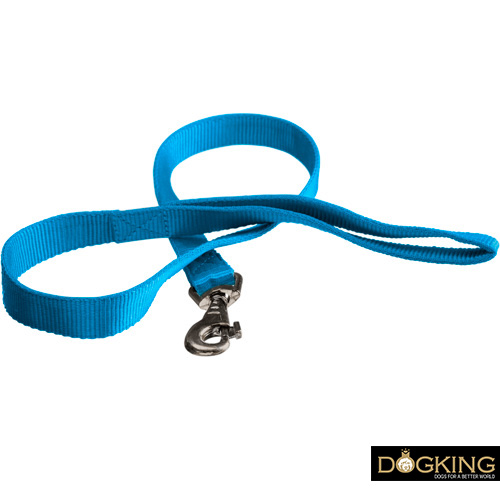
Conventional leashes consist of a strip of some resistant material with a hook for attaching it to the dog's collar and a handle for easy gripping. They are usually 1 or 2 metres long and the most advisable material is nylon, as it is light, fairly strong, easy to wash and gentle on the animal's skin. There are also leather finishes, which tend to last longer, although they can make them heavier. By offering a medium distance, neither too close nor too far, it allows us to give our furry friend the freedom to explore their environment, but at the same time, we maintain control to correct or stop them (we will always do this by holding the lead firmly but without jerking).
-
Long leash
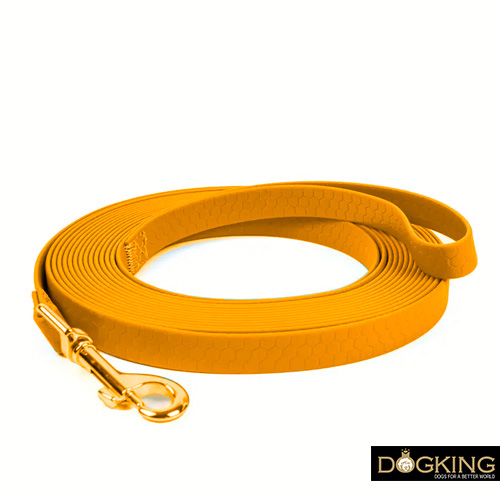
The long lead can be 5, 10, 15 or 20 metres long, Recommended for areas where dogs are not allowed to run free, giving your dog more autonomy to socialise and investigate. It is also very useful for puppies in learning or dogs that are not yet well controlled and do not come when called.
-
Extendable leash
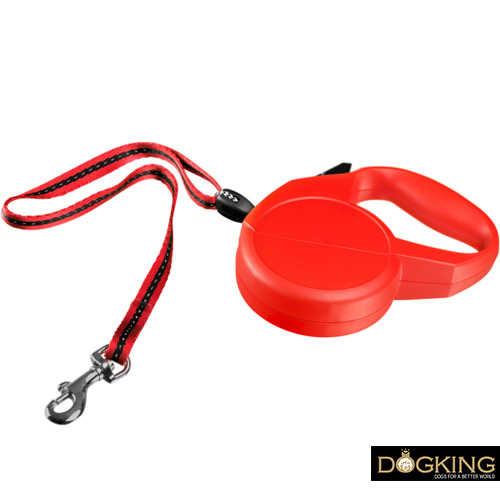
An extendable lead, also known as a flexi lead, is a lead where the cord, which can be rounded or flat, stretches or retracts (rolled up in a box with an ergonomic grip) depending on how far the dog pulls. Depending on the model, they can offer a distance of 3 to 10 metres. These types of leashes are very popular, although they have a number of drawbacks that make them undesirable. For one thing, the rope is always under tension, which can be perceived by the dog as a constant warning signal, causing fear and problems with the environment. On the other hand, if you suddenly stop them in the face of danger, you could hurt them. Also, if you let go of the leash, the rope will quickly retract, which can cause skin burns from rubbing. Other problems they often cause are entanglement with other flexi leashes or even tripping, as some are so long that you end up not being able to control them.
Many people choose these leashes because they think they give their dogs more freedom, allowing them to roam around more independently. And although it is true that extendable leads can work (if we don't give them too much distance) for small and medium-sized dogs that are calm and properly trained, it is preferable to use a conventional lead to maintain control over our pet and keep them safe. It is important that your dog learns to walk calmly at your side, and such a long leash does not encourage this learning. If you want to give your dog more freedom, when you get to the park, change the short leash for a long one and throw it on the ground, he will have the feeling of being loose without the inconvenience of the flexi leash.
-
Chain leash
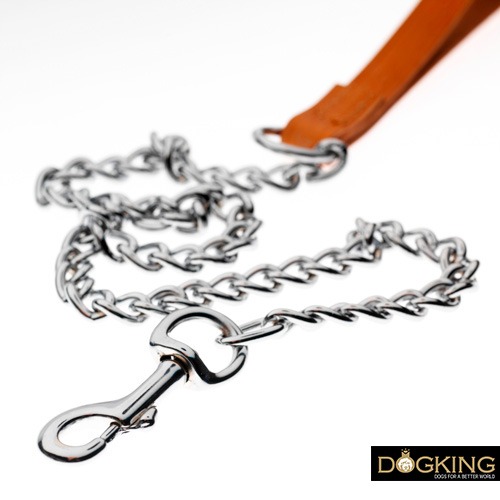
Chain leashes are only advisable if the collar that is in contact with the dog's neck is made of leather or nylon. A metal cord can be practical if your pet is in the habit of chewing the lead, as it will not like this material and will stop doing so. However, the best thing to do is to educate them to modify their behaviour, as if they do it for anxiety reasons, they will redirect this energy to another bad habit. In addition, leashes are heavier and less pleasant for the owner to use.
All-metal leashes are not recommended, as this finish is too hard and uncomfortable for a dog, even a large one. If you have a large strong dog, it is better to opt for a sturdy lead attached to a wide collar, as the larger surface area will not strangle your furry friend.
-
Multiple leash
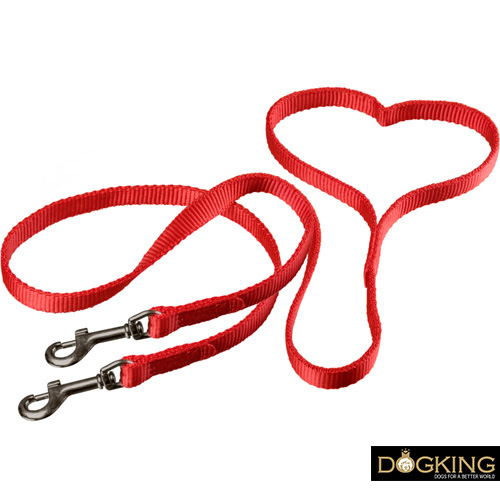
If you have multiple dogs, you've probably heard of multiple leashes. For you, as an owner, it may be very convenient to have a single lead, but the truth is that these multiple formats can crowd your pets, not giving them the space they need to walk comfortably with you. Each dog needs their own place, to be able to explore their environment and go wherever there is an appealing scent to sniff. If both dogs are on the same lead together, you will be condemning them to do the same thing all the time and they will not feel fulfilled and relaxed during the walk.
-
Multiposition leash
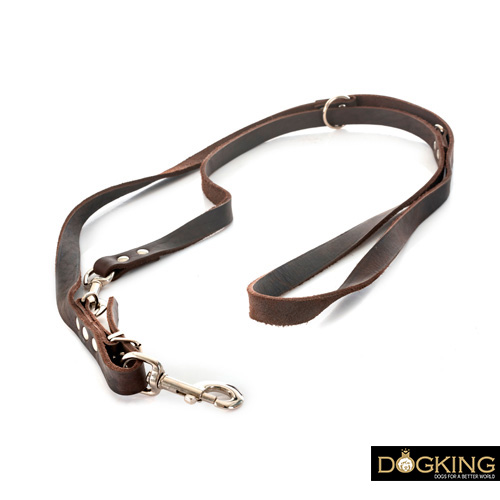
This type of leash has several attachments to tie at various heights, which allows you to give more or less distance to your dog depending on the situation. In this sense it has the advantages of a flexi lead, but is much safer and recommended. If you get one of these ‘all-in-one’ leashes, you can vary the distance at which you tie your dog depending on whether the environment is calm, if there are other dogs or children, or if they are more or less relaxed at that moment.
-
Leash for cycling with your dog
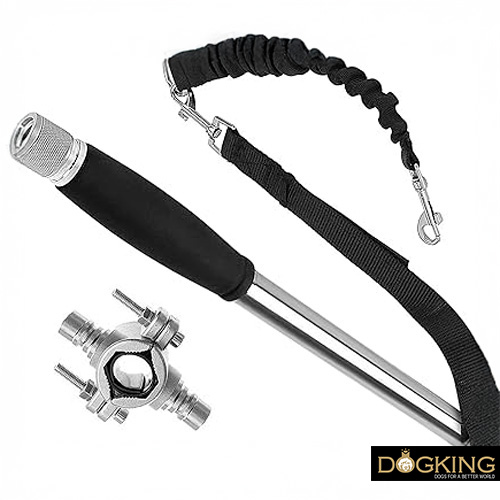
If you would like to have a thousand adventures with your furry best friend, what could be better than a nice bike ride together? There are special leashes that attach to the bike's frame, keeping the animal at a safe distance to avoid stumbling. There are usually strong and specific leashes for this activity, although there are also bike adapters that you can use with your conventional leash.
-
Halti leash
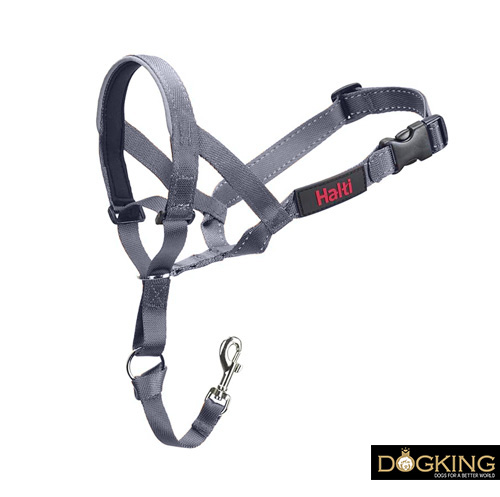
This type of leash consists of a series of straps that are attached to the dog's head and muzzle. The way it works is simple: when the dog pulls, the collar causes its muzzle to close and redirects the head towards the owner, capturing their attention and stopping them from stretching. These leashes have many advocates and detractors. On the one hand, it is said that they can help correct the stretching habit and are safe as long as they are not used with long leashes. However, on the other hand, they can cause chafing in sensitive dogs and do not allow us to distinguish why the dog is stretching, which could very well be because they are afraid, in which case we would be harming them by forcing them to keep walking. It is preferable to find out what is behind the dog's pulling behaviour and to redirect this habit with positive reinforcement and, if we have doubts, the help of an ethologist.
-
Leashes harmful to your dog
Fortunately, more and more research is being carried out with the aim of improving the quality of life of our pets, which is why there are leashes, once very common, that are already banned in some cities and are practically out of use. We are talking, for example, about leashes with spiked collars, which are considered a form of animal abuse. Attempting to correct a dog with this system is useless, as the only effective form of learning is positive reinforcement, not punishment. Hanging leashes are also a strongly discouraged option, as they cause harm and generate fear and anxiety in dogs. Some owners of potentially dangerous dogs use short leashes, around 50 cm in length, to better control them, but the truth is that at this distance a dog cannot explore its environment and will be very frustrated and unhappy. It is preferable to opt for a normal leash that is very strong.
What is the perfect leash for dogs?
If we are talking about a normal walk on a daily basis, the ideal leash is one that is 2 to 3 metres long, which allows us to carry it loosened. It will only become taut if we hold it firmly to correct the dog's course in case of danger or an unwanted situation, but we will never pull on it, as we could hurt our pet's cervical vertebrae. In addition, its shape can be flat or, if you want greater resistance, round, and its weight should be light. An added plus is that it has several multi-position rings that offer you different length options with which you can play depending on the situation.
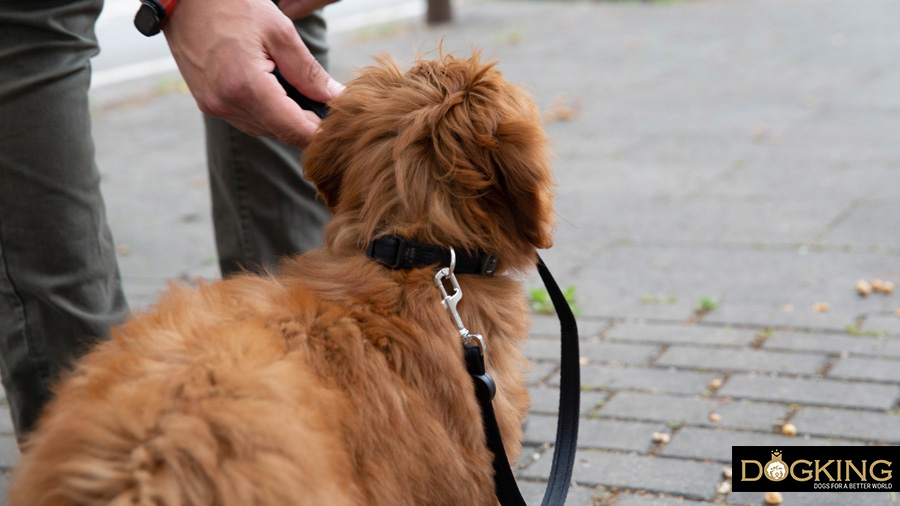
The important thing about a lead is not that it is strong enough to hold your dog at all costs, but that it is light and easy to grip so that you can use it as a complement to keep your dog by your side. If you want to get your dog to walk more calmly with you, you don't need a super-strong lead, but you should teach your dog to walk with you from an early age, getting them used to walking with you through positive reinforcement. In adulthood you can also achieve this, although it may take a little longer. If you have any doubts, contact an expert trainer or ethologist to guide you through the process.